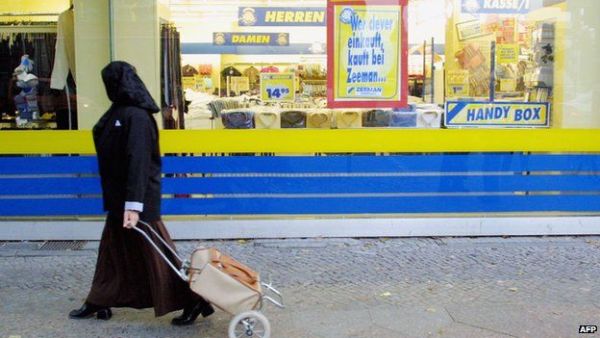- As of 2016, Muslims made up 6.3 percent of the U.K.'s population
- An inflation to 17.2 percent in the U.K. would see the number of Muslims triple
- Muslims are on average 13 years younger than other Europeans and have a higher birthrate
- Muslim immigrants have been a politically sensitive topic in Europe
The Muslim population could triple in some European countries by 2050, with the U.K. projected to see one of the most rapid rises throughout the continent.
A report entitled Europe's Growing Muslim Population said the percentage of Muslims making up the total population of Britain could rise from 9.7 to 17.2 percent.
It attributed the rise to the levels of migration in 2015 and 2016, plus Muslims as a whole having a higher birth rate and lower average age compared to other Europeans.
As of 2016, Muslims made up 6.3 percent of the U.K.'s population, compared to the European total of 4.9 percent.
An inflation to 17.2 percent in the U.K., the highest projected increase, would see the number of Muslims in Britain triple.
The Pew Research Center report modeled three scenarios for estimating the number of Muslims who would be living in Europe by 2050.
All three used a mid-2016 estimate of 25.8 million as a baseline, but assumed different future migration rates.
Under the "zero migration" scenario, an estimated 30 million Muslims would make up 7.4 percent of Europe's population by 2050 compared to the 4.9 percent they comprised last year.
The researchers said that is mostly because Muslims are on average 13 years younger than other Europeans and also have a higher birthrate.
The study estimates 58.8 million Muslims would account for 11.2 percent of the population in a "medium migration" scenario in which migration maintains a "regular speed."
- Canada Sees a Drop in Muslim Hate Crime: Report
- Pro-Refugee German Mayor Stabbed in Possible Political Crime
In the "high migration" scenario, the study projects that the record flow of migrants who came to Europe between 2015 and 2016 would continue indefinitely, resulting in 75 million Muslims in Europe, a 14 percent increase, by the middle of the century.
Even with the most immigration, Muslims would "still be considerably smaller than the populations of both Christians and people with no religion in Europe," the researchers concluded.
Muslim immigrants have been a politically sensitive topic in Europe following the influx of newcomers in 2015 and 2016.
Some countries have seen backlashes that have included populist parties campaigning on anti-Islam messages.
The study was based on census and survey data, population registers, immigration data and other sources.
The 30 countries it covered include the 28 European Union members, plus Norway and Switzerland.
Not all countries would be affected evenly by future immigration, according to the Pew report.
In the high migration scenario, Germany and Sweden would have the biggest increases because both countries took in the most asylum-seekers during the height of the refugee crisis two years ago.
While Muslims made up six percent of Germany's population last year, their proportion would go up to 20 percent by 2050.
Sweden's Muslims, who were at eight percent in 2016, would account for 31 percent of the population in that same scenario.
Meanwhile, some countries that had comparatively few Muslim residents in 2016 would continue to have few by 2050 in all three scenarios.
This article has been adapted from its original source.










